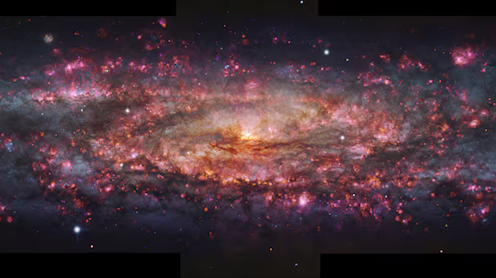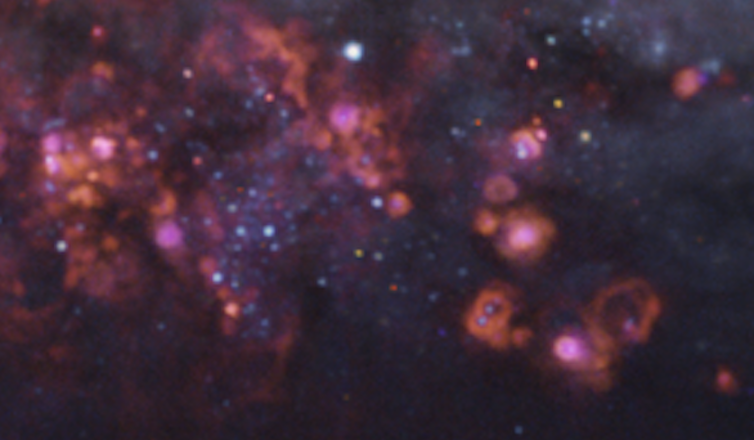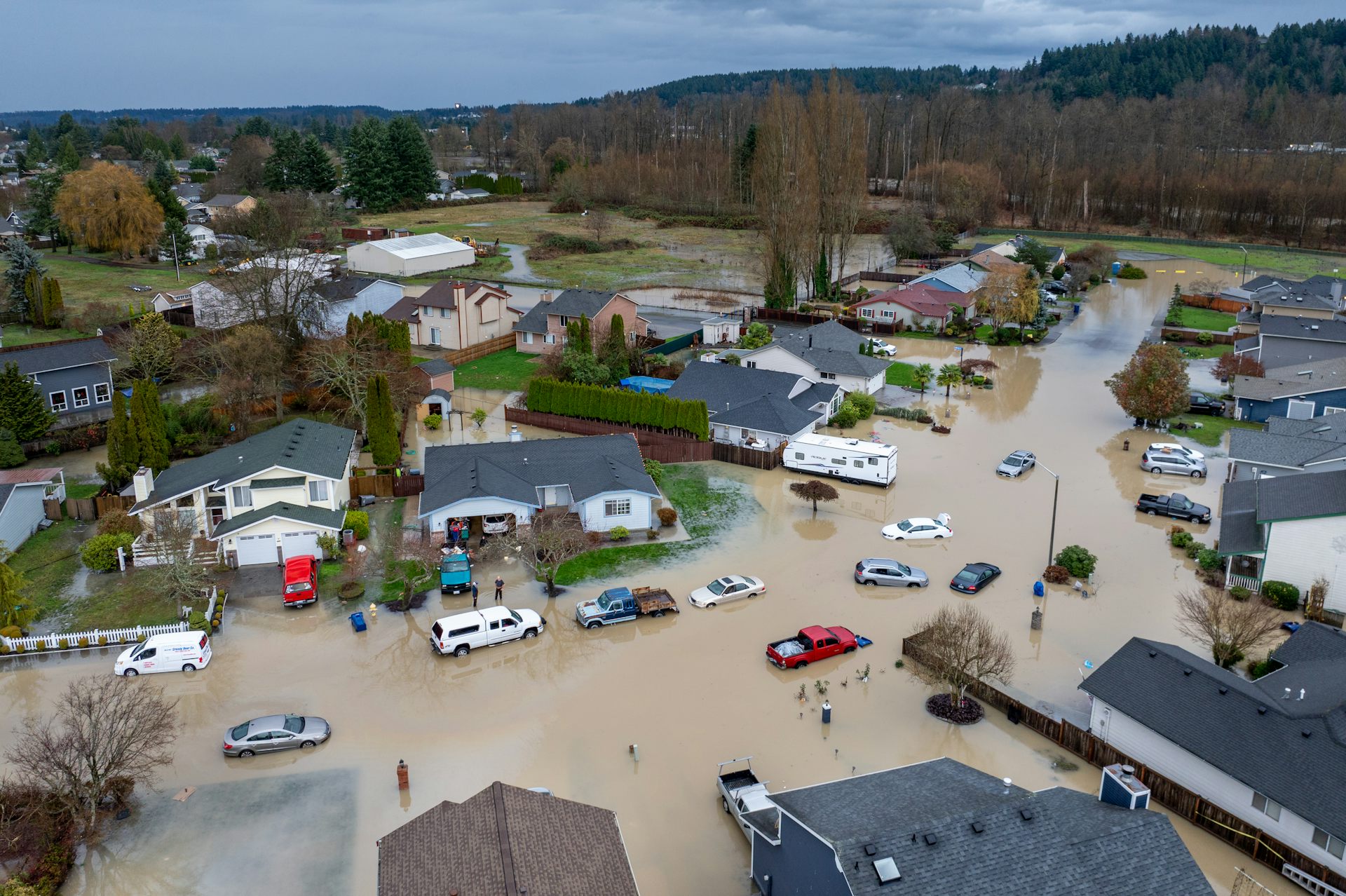Sculptor galaxy image provides brilliant details that will help astronomers study how stars form
Researchers stitched together hundreds of images from the Very Large Telescope to form a breathtaking photo of a nearby galaxy.

If you happen to find yourself in the Southern Hemisphere with binoculars and a good view of the night sky on a dark and clear summer night, you might just be able to spot the Sculptor galaxy. And if your eyes were prisms that could separate light into the thousands of colors making it up, then congratulations: After hours of staring, you could have recreated the newest image of one of the nearest neighbors to our Milky Way galaxy.
This is not just another stunningly gorgeous picture of a nearby galaxy. Because it reveals the type of light coming from each location in the galaxy, this image of the Sculptor galaxy is a treasure trove of information that astronomers around the world cannot wait to pick apart.
As an astronomy Ph.D. student at Ohio State University, I (Rebecca) am one of the lucky people who gets to stare at this image for hours every day, alongside my adviser (Adam), discovering meaning behind the beauty everyone can appreciate.
Creating the image
The Sculptor galaxy lies 11 million light-years from the Milky Way. This may sound unfathomably far, but it actually makes Sculptor one of the closest galaxies to Earth.
For this reason, Sculptor has been the primary target for many observations. In 2022, an international team of scientists observed Sculptor with the Multi-Unit Spectroscopic Explorer, MUSE, on the European Southern Observatory’s Very Large Telescope in Chile, and publicly released the data this June.
Most astronomical observations obtain either an image of a single color of light – for example, red or blue – or a spectrum, which splits the light coming from the whole galaxy into many different colors.
MUSE, conveniently, does both, producing a spectrum at every location it observes. One observation creates thousands of images in thousands of colors, each tracing the critical components that make up the galaxy: stars, dust and gas.
It may look like only one picture, but this image of Sculptor is actually over 100 individual observations and 8 million individual spectra, painstakingly stitched together to reveal millions of stars all in one cohesive galaxy.
Scientific significance
The light associated with the stars in Sculptor is colored white, and gas made up of charged particles is colored red. The largest concentration of both is found in the spiral arms. At the very center of the galaxy is a nuclear starburst: a region of extreme star formation that is blowing material out of the galaxy.
There is even information in the absence of light. Dust obscures light emitted from behind it, creating a shadow effect called dust lanes. Tracing these dust lanes reveals the cold, dense material that exists between stars. Scientists believe this dark material is the fuel that will form the next generation of stars.

There is a lot to look at in this image, but the subject of my work and what I find most interesting is the gas illuminated in red. In these star-forming regions, young and massive stars excite the gas around them, which then glows with a specific color to reveal the chemical makeup and physical conditions of the gas.
This image represents one of the first times that astronomers have obtained images of thousands of star-forming regions at this impressive level of detail. A component of our team’s research uses the data from MUSE to understand how these regions are structured and how they interact with the surrounding galaxy.
By meticulously piecing all of this information together, astronomers can use this image to learn more about the formation and evolution of stars across the universe.
Rebecca McClain receives funding from the National Science Foundation.
Adam Leroy receives funding from NASA/Space Telescope Science Institute that supports research related to the survey of NGC 253 discussed in this article.
Read These Next
Oldest known cremation in Africa poses 9,500-year-old mystery about Stone Age hunter-gatherers
An ancient cremation would have been a community spectacle in a place returned to and reignited over…
West Coast levee failures show growing risks from America’s aging flood defenses
Levees protect more than 7 million buildings in the US today, yet they got a D-plus grade in 2025. A…
Has the Fed fixed the economy yet? And other burning economic questions for 2026
As 2026 begins, uncertainty is at the top of everyone’s mind.






